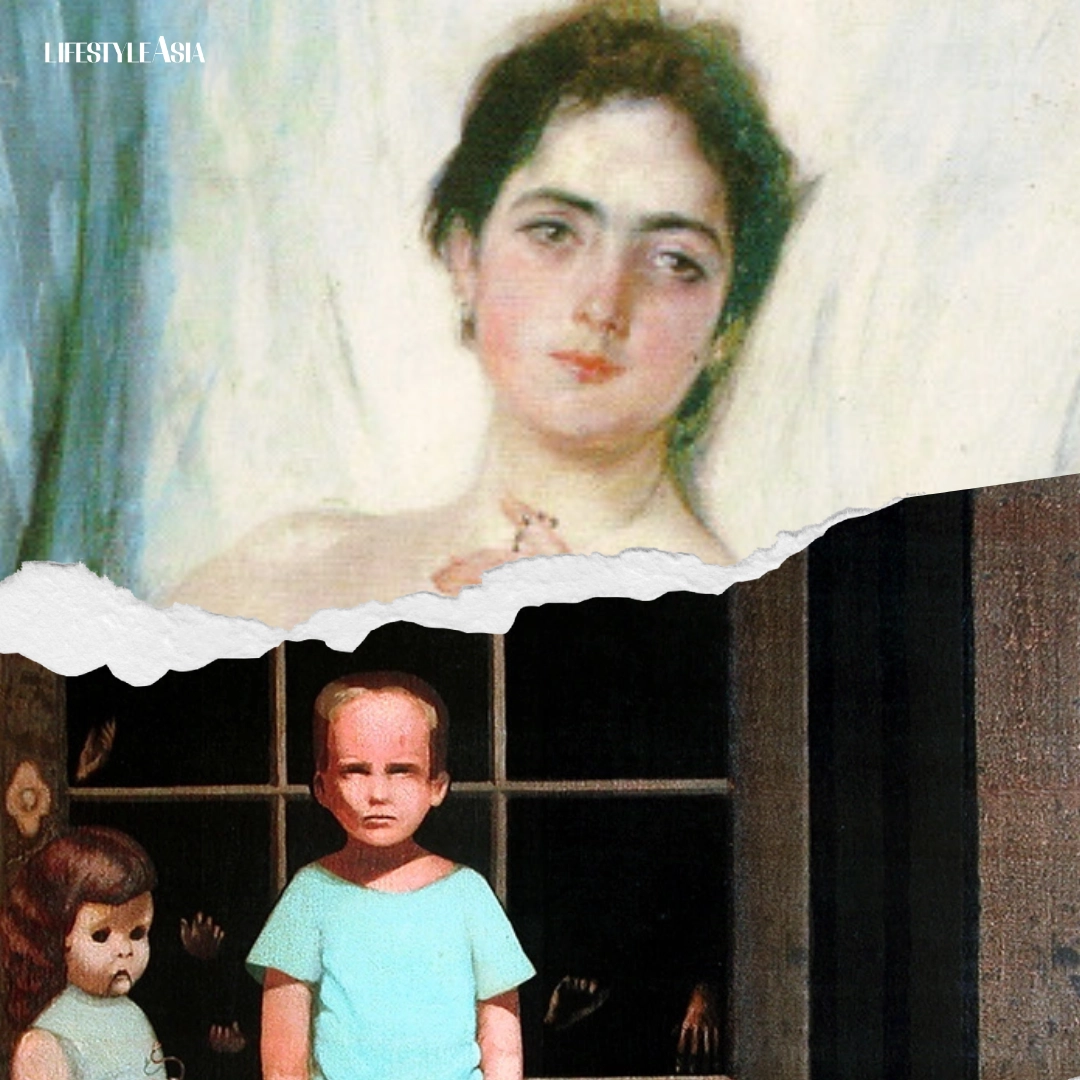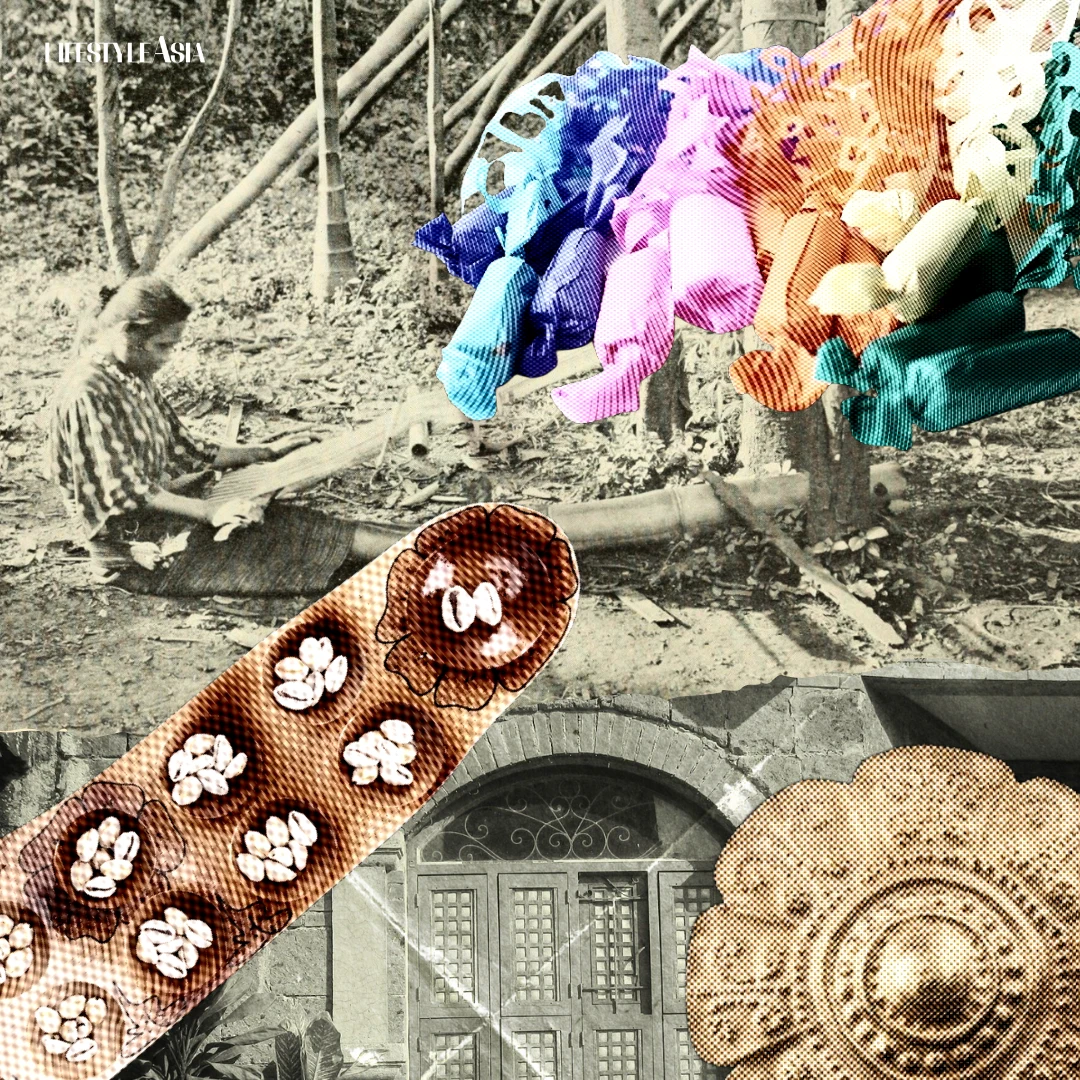At the Sharjah Biennial, Filipino collective Sa Tahanan Co. offers a moving reflection on memory, migration, and belonging.
Amid the rush of endless images and noise, there are still places that ask us to linger, to listen. The Sharjah Biennial—widely regarded as the region’s most influential platform for contemporary art—is one such space. It does not insist on spectacle, but instead invites quiet reflection, asking us to dwell in complexity and absorb the subtleties that often slip past.
READ ALSO: Justin Nuyda Origin Story: A Sensorial Tribute At Hapag
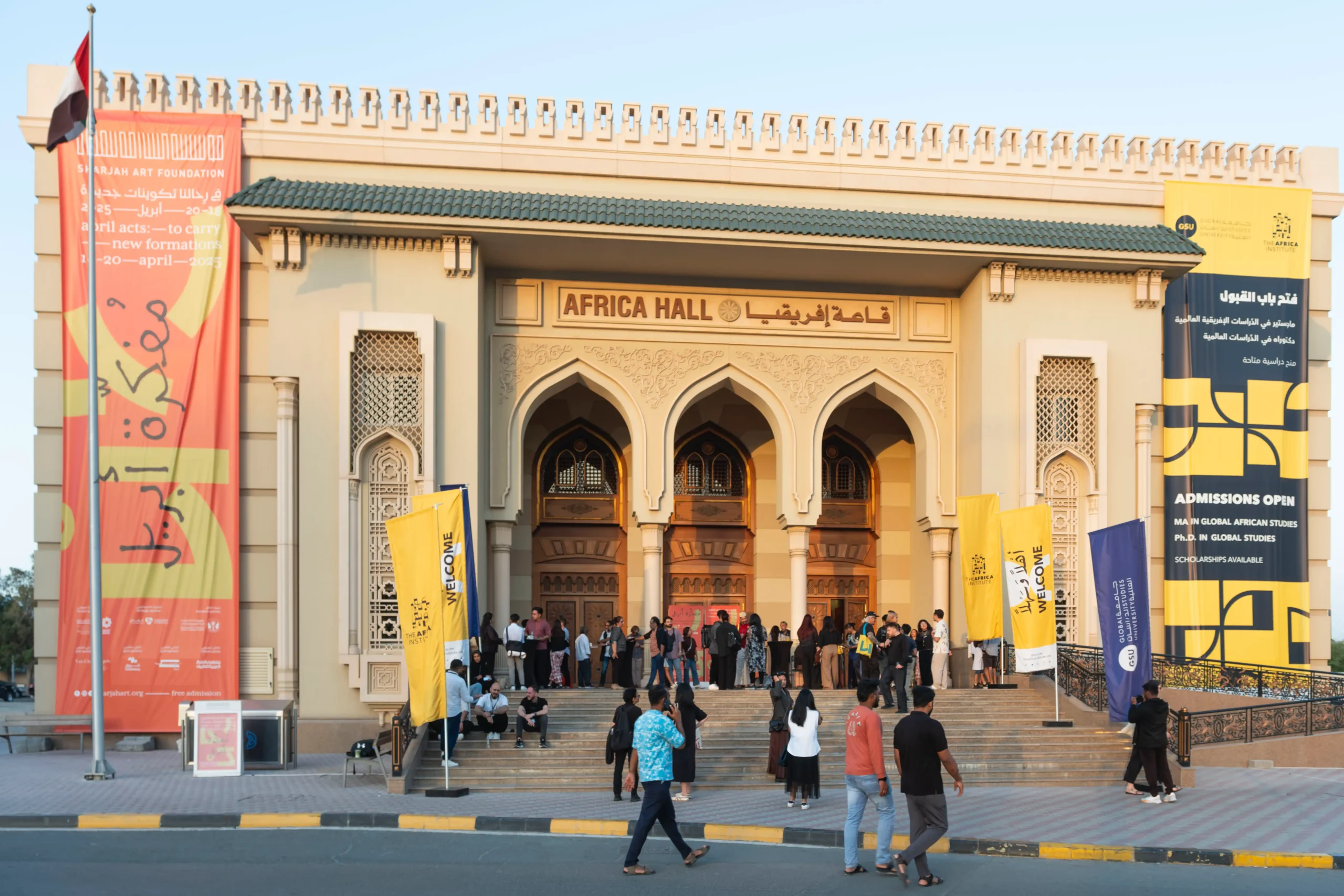
Within this meaningful terrain, a small but resonant collective in Dubai—Sa Tahanan Co.—cultivates its own sacred ground. Rooted in community, not commerce, the collective offers more than just a platform for Filipino artists. It offers a home. Not in the literal sense, but in that intimate, soul-level way that only shared purpose and deep care can create. Their mission is not to perform identity, but to live it—truthfully, vulnerably, and without apology.
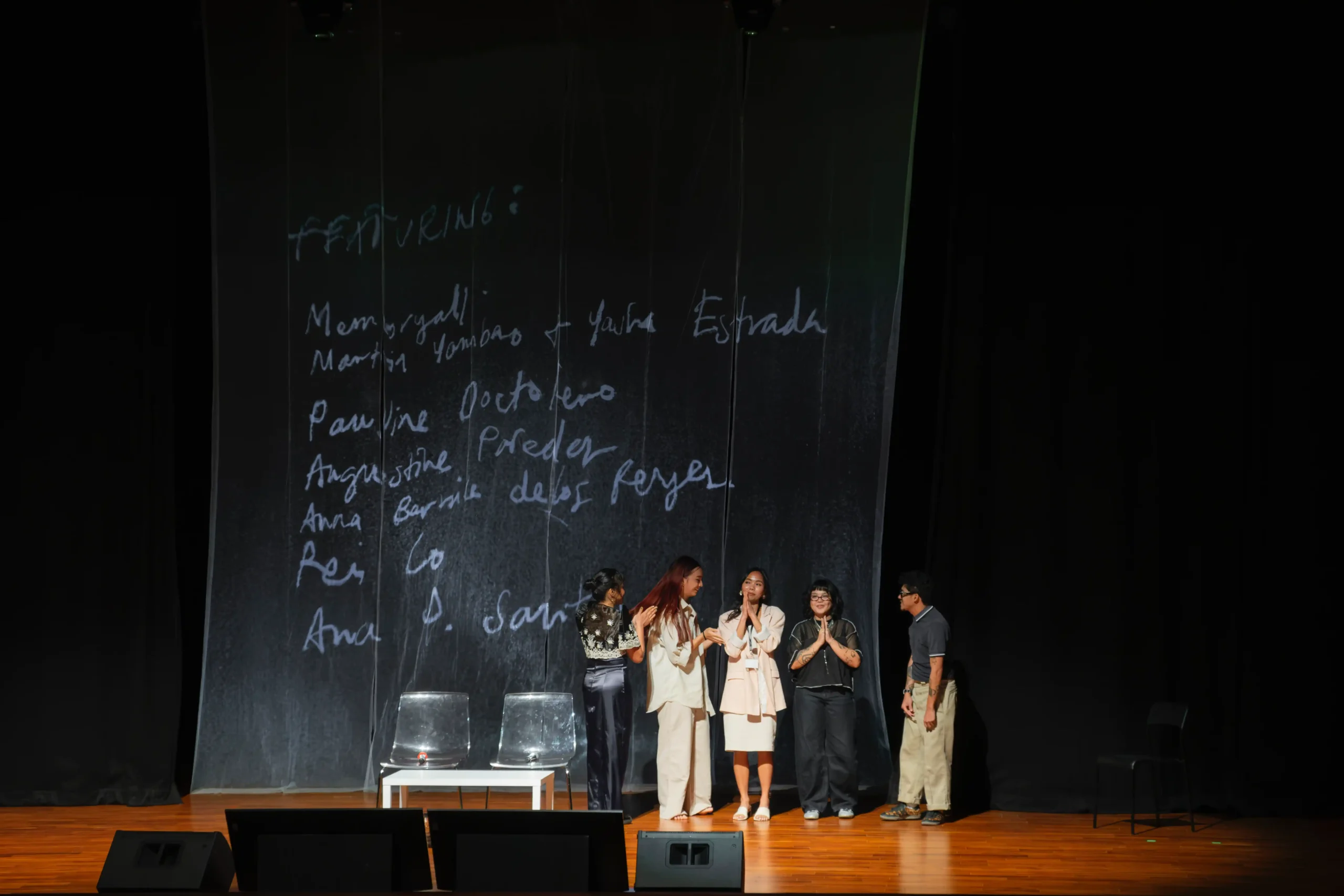
Sa Tahanan Co.: Stories of Diaspora
More than a gathering of artists, Sa Tahanan Co. embodies the vast architectures of diaspora: stories marked by resilience and a longing that refuses to fade. Their practice reveals the quiet enormity of migration—unfolding across visual, performative, and sonic landscapes—each piece a doorway into lived experience.
Their recent performance program, In Our Stillness, commissioned by the Sharjah Art Foundation for the Sharjah Biennial, was not just a series of performances but a meditation—on absence, on memory, on the spaces in between. Structured in segments that flowed like chapters in an unfinished book, the show unfolded with quiet clarity, shaped in part by the subtle hand of technical director Thomias Radin. His direction allowed each threshold—of departure, arrival, stasis—to emerge with intention. The stillness held weight. It wasn’t silence, but depth.
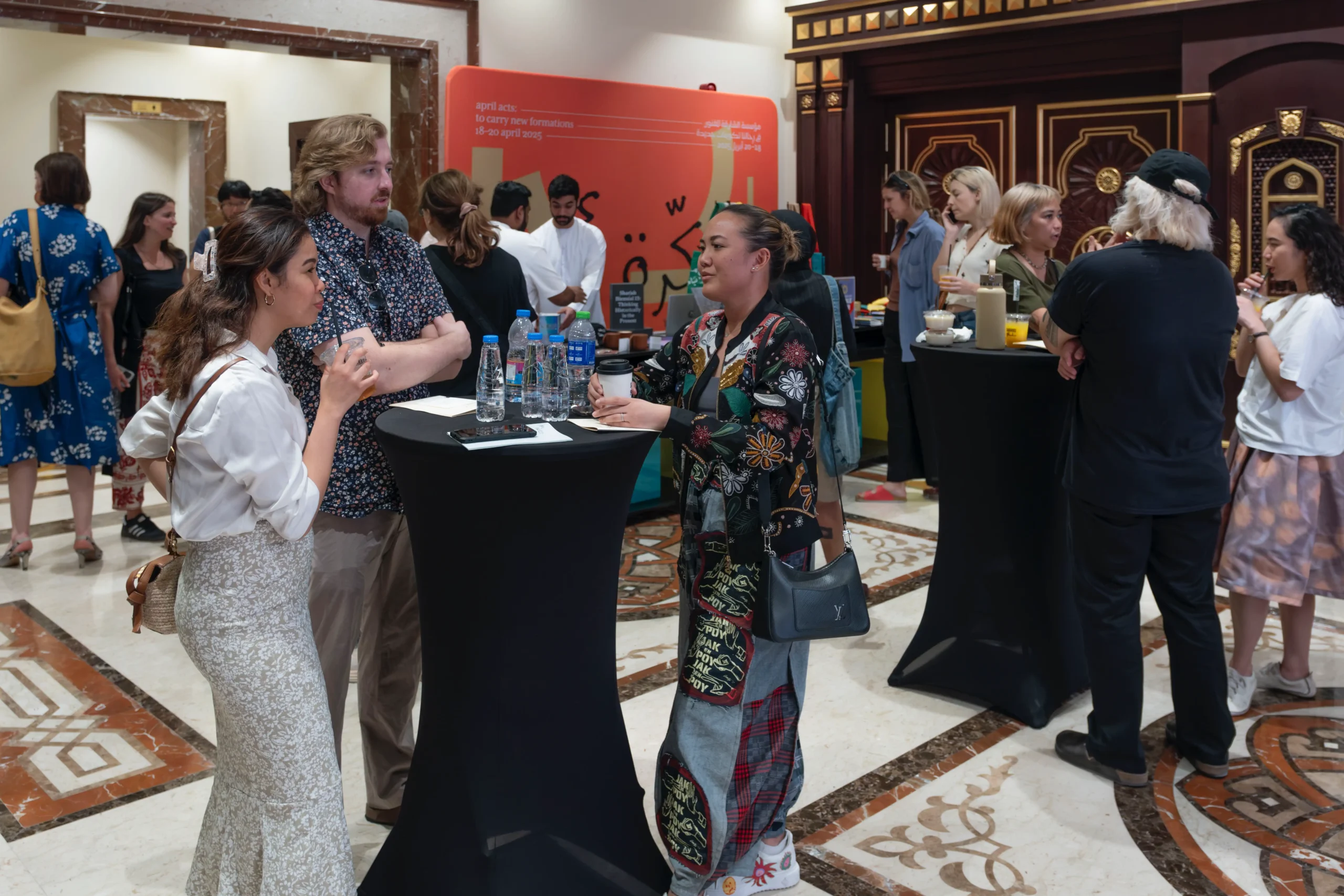

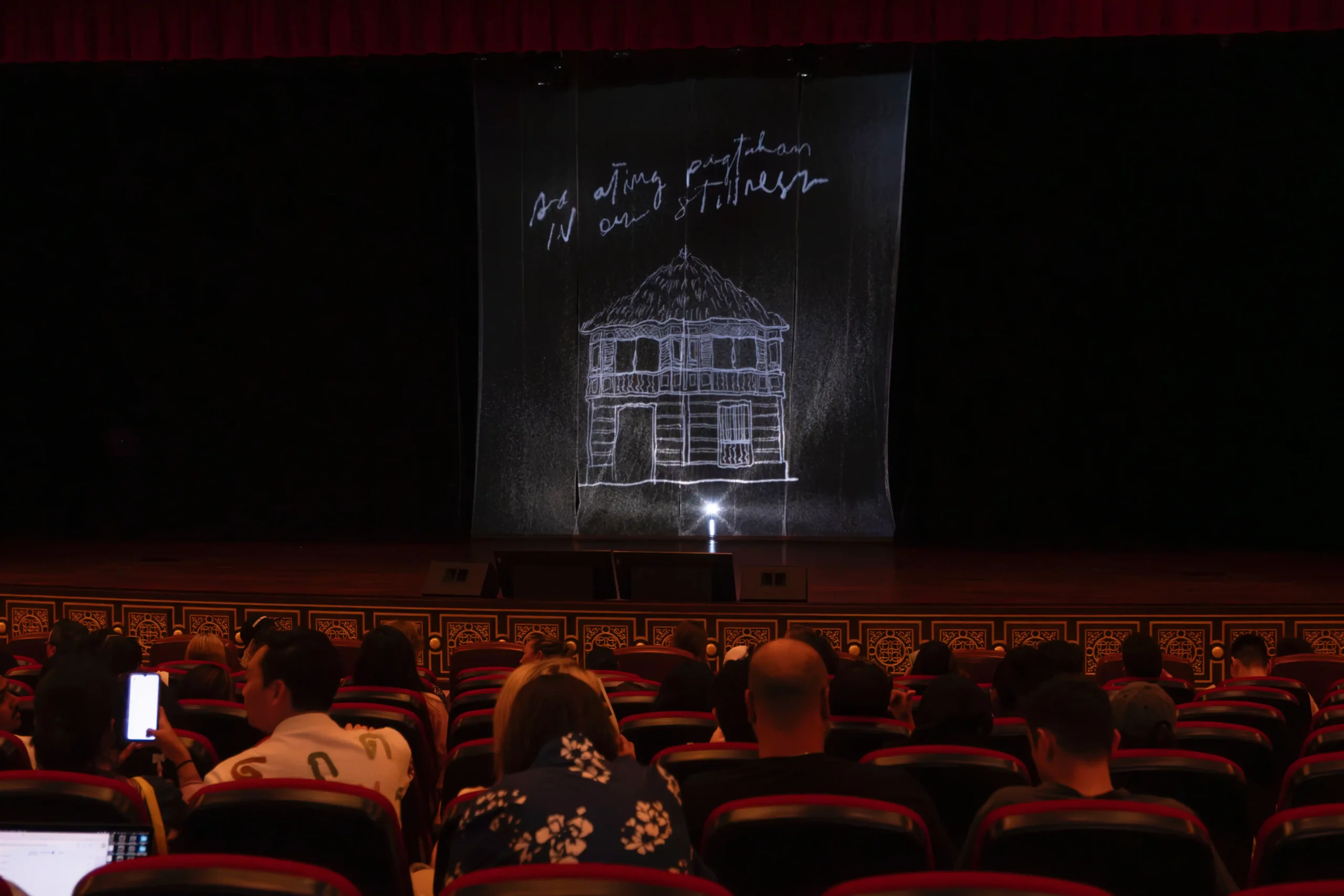
A poignant element that coursed through the exhibition was the use of projected visuals onto scrim—a translucent fabric that softened imagery and layered the space with quiet nostalgia. This luminous dimension gently dissolved the boundaries between presence and recollection, amplifying the show’s meditative atmosphere and deepening the tone of each work.
This sensibility resonated in the installation by duo Memoryall (Martin Yambao and Yasha Estrada), whose work conjured something between shrine and archive. Personal artifacts, abstract gestures, and sculptural elements wove together to form a living space for memory. Their installation did not dictate what to feel—it offered space to remember, a reminder that memory is porous, ever-shifting, and shaped by both presence and absence.
READ ALSO: Fernando Zóbel: A Centennial Homage
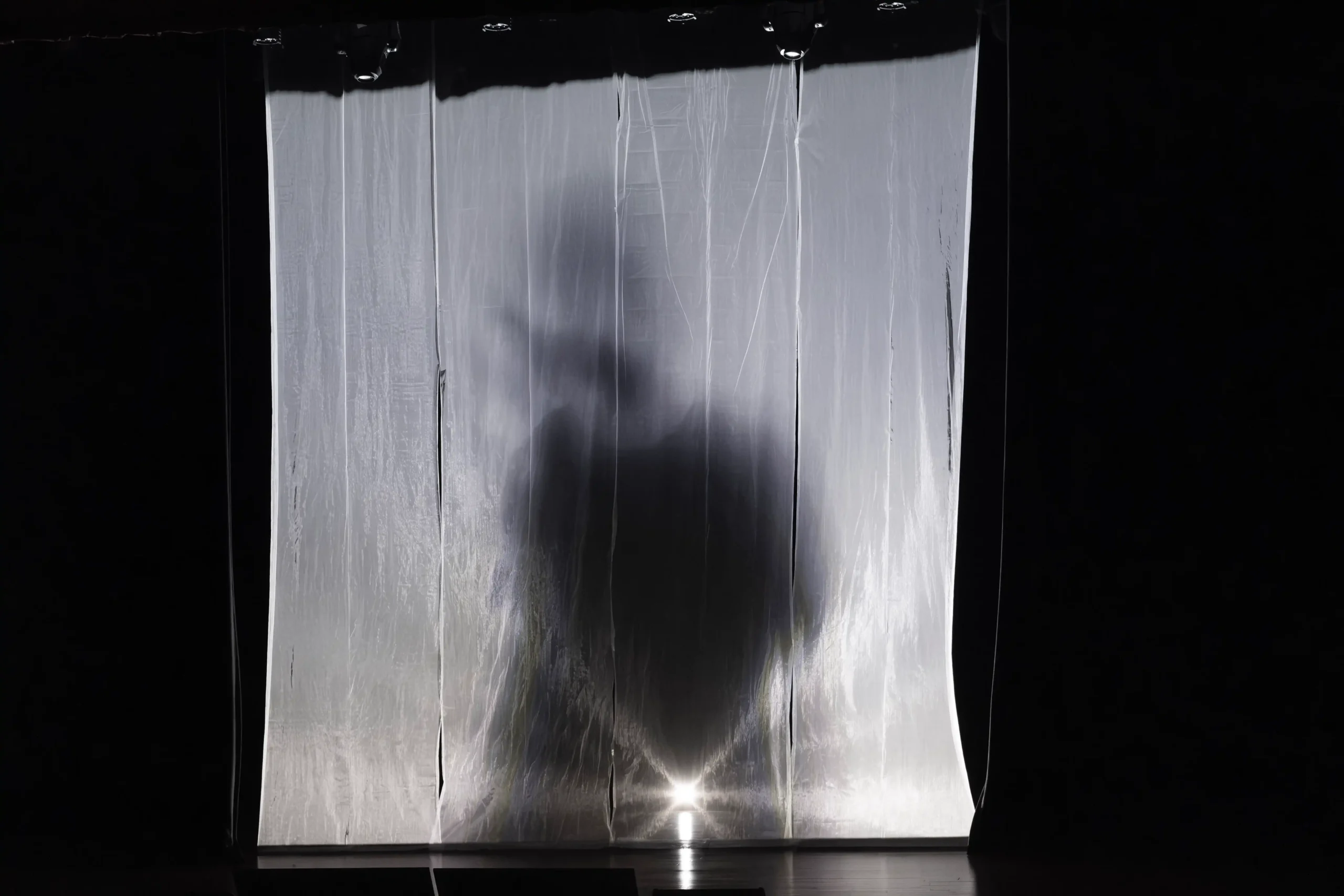
Augustine Paredes’ “Paraluman (After Huling El Bimbo)” was a reflection on desire and reclamation. Framed by a delicate lattice of branches and leaves, his silhouette—layered and luminous—resisted fixed readings. Longing, in his work, became not just an ache, but a method—a way of anchoring the self amid movement. A subtle native string instrumental, echoing the melody of “Huling El Bimbo,” threaded gently through the piece, deepening its atmosphere of yearning. Paredes narrated in Tagalog, a choice that, for those born and raised in the Philippines like myself, allowed the familiar tune and language to surface effortlessly in the mind, blurring memory and present.


With Pauline Doctelero, the narrative turned inward through handwritten letters she had sent to her mother working overseas as a child. Her multimedia pieces in “Dear Mama” intertwined familial memory, absence, and inherited resilience. Through image, sound, and object, she rendered the efforts of her younger self keeping connections intact. Her work didn’t just reference migration—it pulsed with its sorrow.
Both Augustine and Pauline made the conscious choice to present in Tagalog, without offering subtitles or translations. The collective’s decision shaped two parallel experiences: for those familiar with the language, it stirred an immediate emotional closeness; for others, it created a soft distance—a space where curiosity unfolds and meaning was sensed rather than fully grasped. Language became a frequency—not read, not heard, but felt.
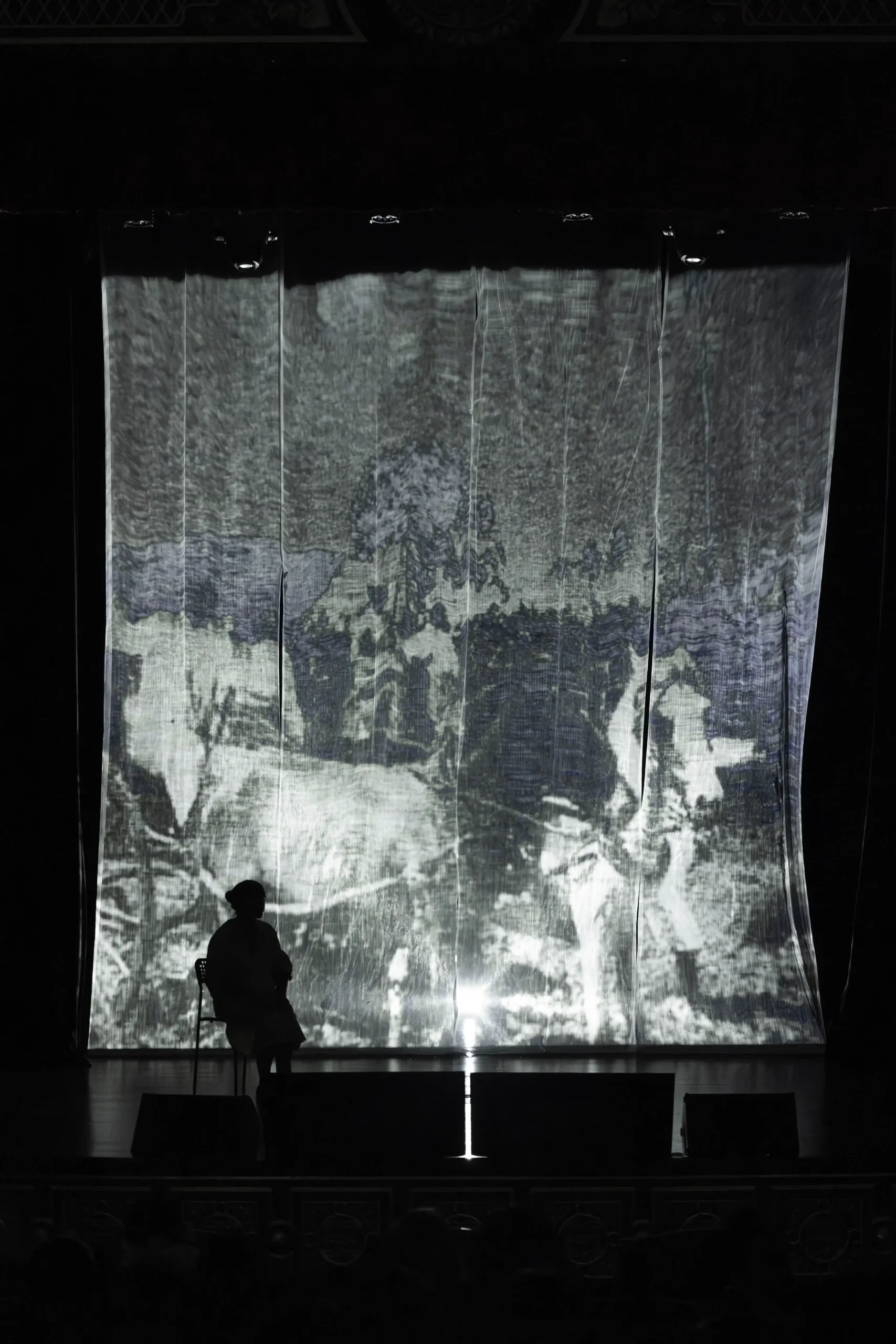
In “My Tropical Body and Seasonal Rhythm”, Anna Bernice delos Reyes offered a tender dissection of displacement through her rhythmic soliloquy. Her negative images—bodily, blurred, chromatic—suggested the ways landscapes imprint on us, even in leaving. There was a kinetic dissonance between the glitching visuals and the calm, motivating cadence of her voice—a tension that felt both deliberate and quietly subversive. Accompanying her were live visuals by Memoryall, whose responsive projections added a temporal, collaborative quality—blurring the line between narrative and sensation in real time. The body became a map, etched with climate, distance, and change.
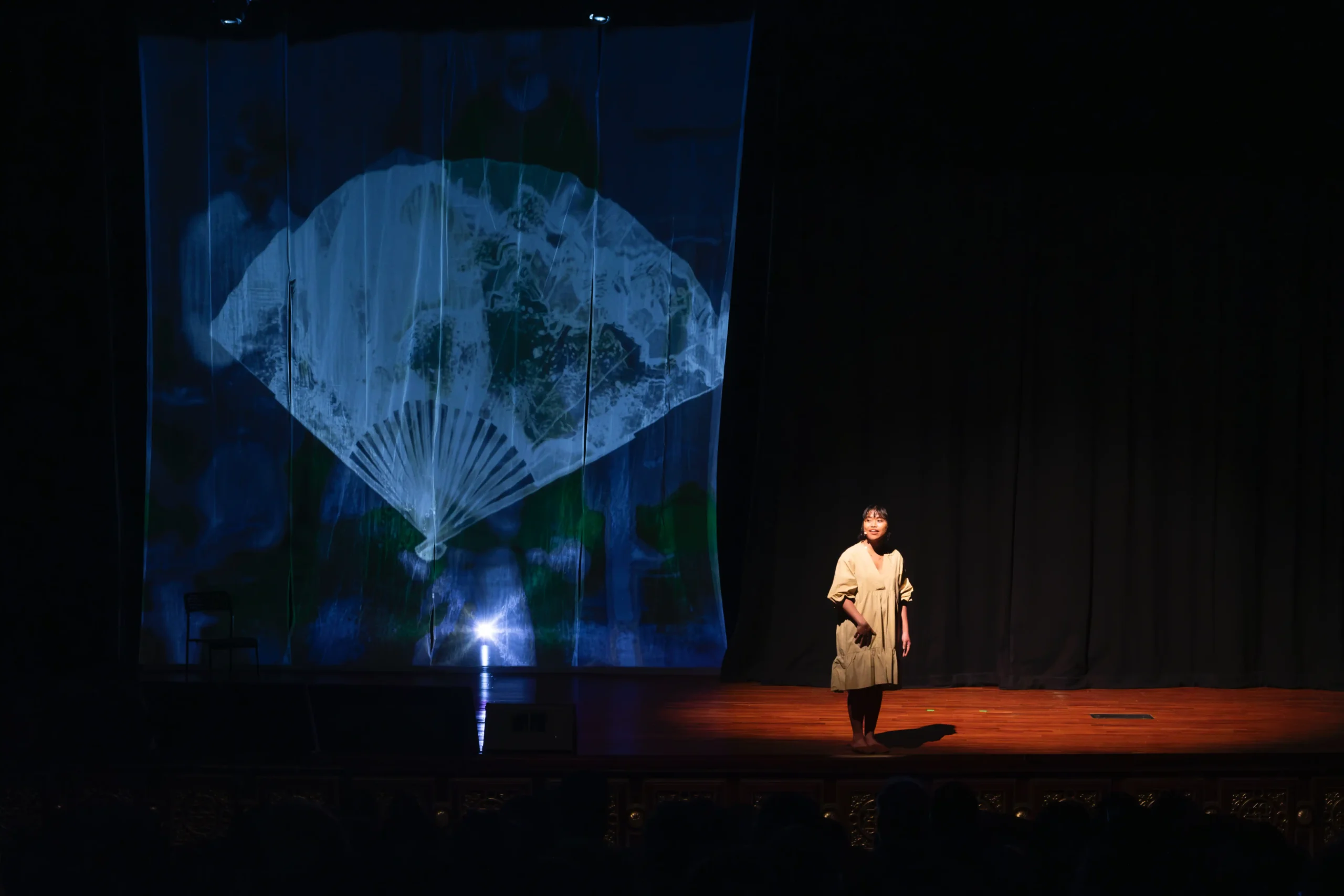
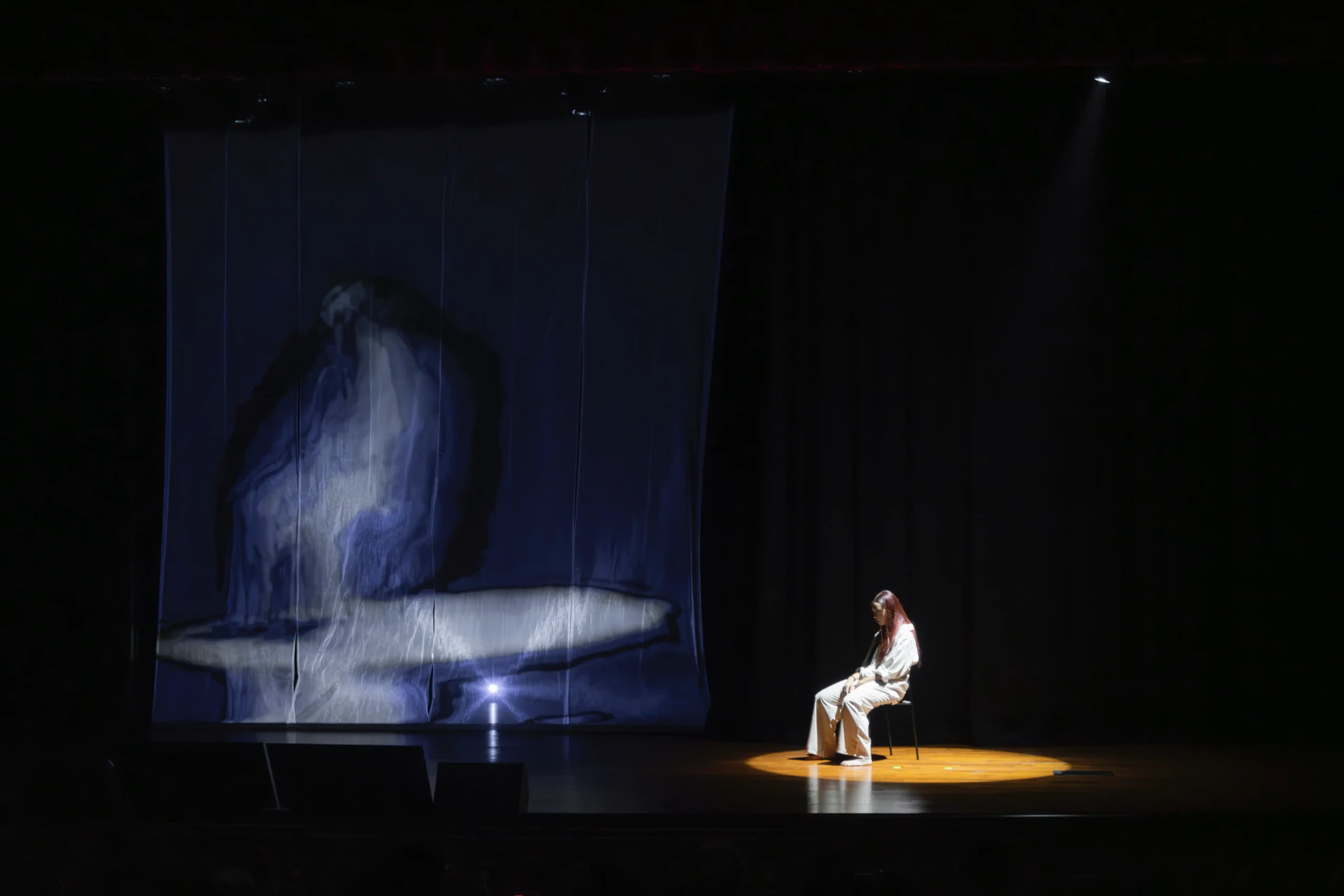
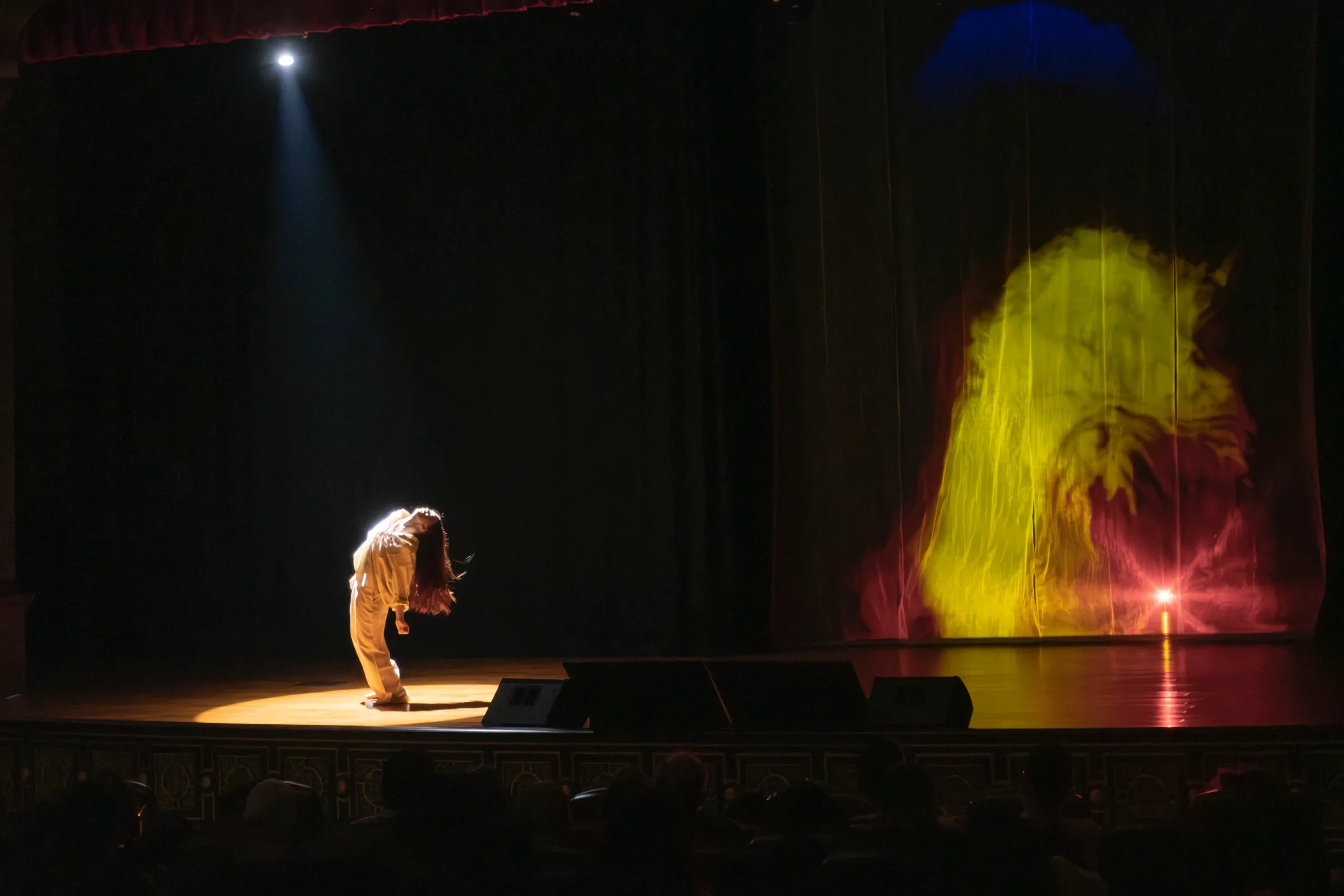
Rei Co’s “Layâg” shifted the form entirely. A performance piece, her dance moved through the space like water—fluid, responsive, searching. Her gestures explored the friction between rootlessness and return, suggesting that identity is not a fixed form but a series of small, persistent negotiations, regardless of the roles one holds within a family.
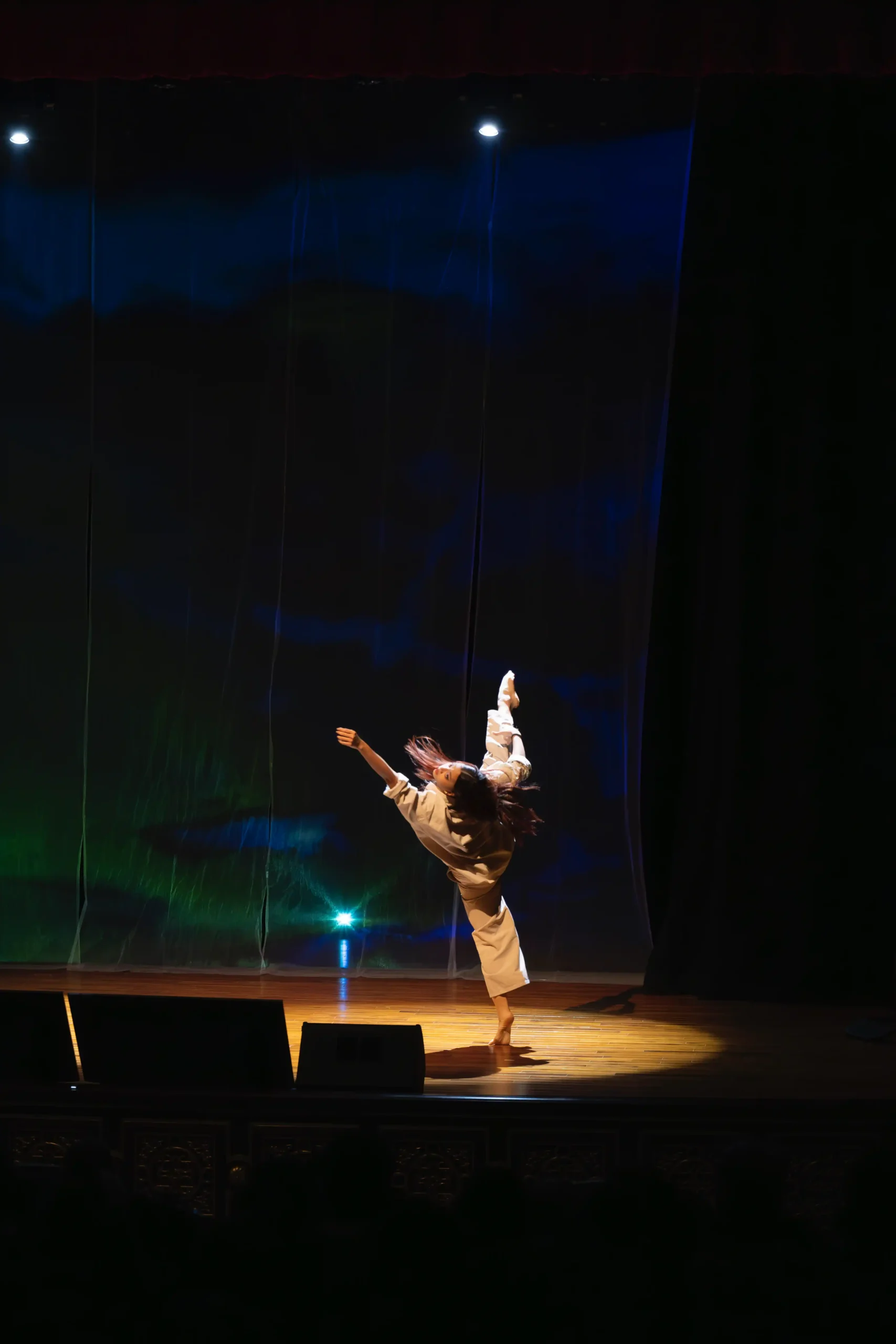
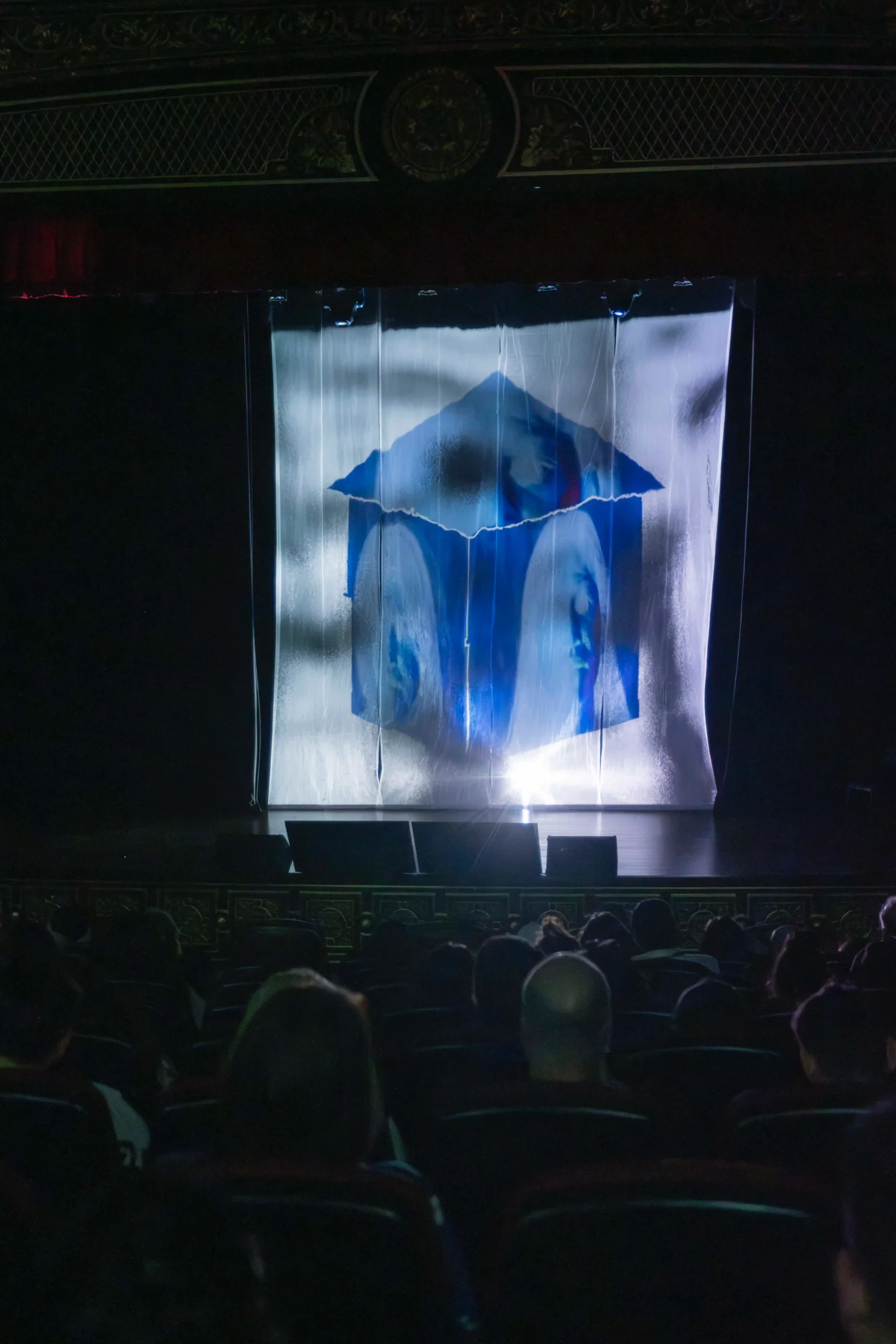
Closing the exhibition, Ana Santos offered a multi-disciplinary work steeped in critical inquiry. “The Sisterhood of Filipino Nannies,” shaped by research and storytelling, illuminated the intersections of labour, gender, and quiet histories. Her recorded reading unfurled across the space, accompanied by Memoryall’s visual response—projected live on the translucent mesh—allowing text and image to converse in real time. Beneath the sharpness of her lens was warmth—a deep commitment to tracing how systems impact lives.
What lingered after the final piece was not resolution, but resonance. Sa Tahanan Co. doesn’t simply host artists; it holds space—for vulnerability, for slowness, for complexity. Their collective practice is an offering: to each other, to their community, to the histories they carry. And in a cultural moment often dominated by immediacy, this kind of durational, relational work feels quietly radical.

A Collective Culture
Their presence at Sharjah Biennial is a model of what cultural work can become—when sustained engagement replaces spectacle, and care becomes structure. Especially in the Philippines, where institutional support for artists can often be fragmented, collectives like Sa Tahanan Co. show that alternative modes of gathering, making, and remembering are not only possible—they are essential.
As I left the space, I wasn’t thinking of conclusions. I was thinking of continuations—of what happens when artists are met with trust, when stories are given room to unfold. We don’t just witness those stories. We carry them forward. And in doing so, we widen the ground where new homes, new futures, might one day take root.
About Sa Tahanan Co.
Sa Tahanan Co. is a Filipino artist collective based in Dubai. Formed in 2020, the group fosters creative ecosystems through shared memory, artistic dialogue, and community-driven initiatives across the Filipino diaspora.
About the Writer
Ayni Nuyda is an art consultant and the founder of Search Mindscape Foundation, Inc., a non-profit organization that has dedicated itself to creating spaces that inspire interaction, collaboration, and engagement in the Philippine art community.


